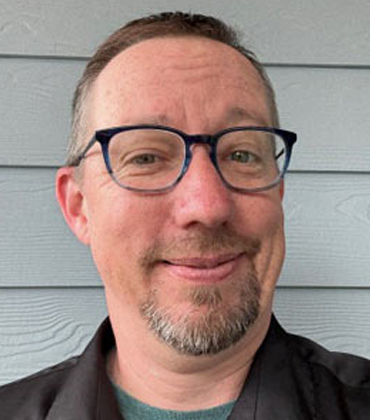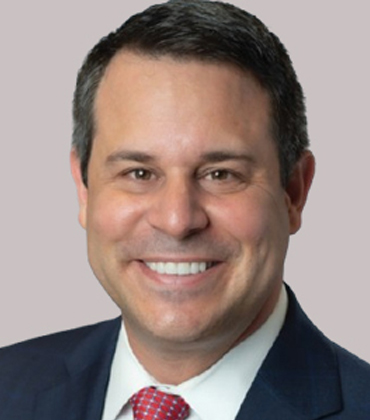THANK YOU FOR SUBSCRIBING
In the years following the enactment of the Affordable Care Act, employer healthcare moved through a period of readjustment. Premiums rose sharply and the familiar playbook no longer applied. Business owners across New York State began re-examining how their plans were structured and what actually drove their costs. Among those listening closely was financial advisor David Middlemiss. When one of his business clients asked for help designing a healthcare plan, he approached it the only way he knew how—by following the numbers. He soon realized that the existing system operated through opacity, making it difficult for employers to trace how their healthcare dollars were spent. Community-rated plans spread costs evenly across groups, limiting control over pricing. Self-insured plans offered transparency, but put all risk on the employer. In both cases, the structure lacked the balance and insight employers needed to manage benefits intelligently. “My background in finance taught me that transparency brings more discipline into processes, and that changes outcomes,” says Middlemiss. “The healthcare industry is no different. When people understand their risk profiles, they stop reacting to healthcare costs and start preventing them.” That realization led Middlemiss to build something new in the employer benefits category, and Prodigy Benefit Management was established. The firm advocates for preliminary healthcare, bringing financial logic and transparency to employer plans so that care starts before a claim is ever filed. In doing so, it reframes healthcare costs from fixed expenses into variables that can be improved through education, engagement and prevention. That philosophy comes to life through Prodigy’s Paradigm Integrated Healthcare Plan app. It gives employees access to health-risk data once reserved for insurers and connects them to preventive resources through Prodigy’s partnership with U.S. HealthCenter. Within the app, nutrition guidance, behavioral health support and condition-specific coaching converge into a single, adaptive experience that helps employees engage, close care gaps faster and ultimately allows employers to see costs stabilize.
What if 90 percent of your hiring decisions were guaranteed to be right? SmoothHiring delivers that certainty. By embedding AI and predictive analytics into its applicant tracking system, it turns hiring into a forward-looking strategy rather than a reactive process. Every step from defining role requirements to evaluating candidates and onboarding is informed by data patterns that reveal who is qualified and likely to thrive in the role. For recruiters, this means fewer costly mis-hires, stronger alignment between talent and business needs and a hiring function that actively contributes to long-term workforce resilience rather than simply filling vacancies. One of the platform’s most powerful differentiators is its patented behavioral assessment tool, designed with guidance from a Harvard psychometric professor. The algorithm evaluates 16 core personality traits and benchmarks them against the requirements of each role. A sales manager position, for example, may demand leadership, supervisory skills and resilience under pressure, while a customer service role places greater emphasis on empathy and service orientation. Each applicant receives a unique “scorecard fingerprint,” giving employers a clear, objective view of who is most likely to succeed. “By uncovering the human traits that drive performance, our predictive analytics replaces guesswork with science, ensuring every hire is not only qualified but the right fit for the role,” says Srinivas Kethireddy, CEO. The hiring journey begins with SmoothHiring’s AI-powered job description wizard, which generates role-specific postings and salary benchmarks tailored to skills, experience and location. These postings are then distributed across more than 200 major and niche job boards to maximize reach. Once candidates apply, AI-driven video interviews personalize the screening process, giving applicants flexibility to respond on their own time while allowing managers to review responses at their own. Automated workflows manage scheduling, e-signatures and onboarding documentation, allowing recruiters to focus on strategic decision-making rather than administrative tasks. Once applicants begin flowing in, the platform keeps the process structured and transparent. Custom pipelines let recruiters track candidates’ stage by stage, while AI-driven video interviews generate role-specific questions from the job description. Applicants can record their responses on their own time, and managers can review them at their own time. Automated workflows tie it all together, scheduling interviews, managing e-signatures and completing onboarding documentation, so recruiters spend less time on administration and more time engaging with top candidates.

Patrick Yearout, FMP, CHT, Director of Innovation, Recruiting, and Training, Ivar’s Restaurants

Emily Gambacorta, Employee Engagement and Experience, Central Hudson

Monica Melancon, Chief Human Resource Officer, Wyndham Hotels & Resorts

Robert Hamer, Chief Human Resources Officer, Ron Marhofer Auto Family

Kyle Plett, Director of People and Culture, Car Toys

Melanie Berman, Executive Vice President of Administration and Chief Human Resources Officer, NiSource

Doug Dureau, CHRO, EVP HR & Administration, Hillwood
The Workplace Is Reading You and That’s Not Entirely Bad
Workplaces have stopped pretending to be neutral. They’re actively interpreting signals that were previously overlooked and the implications are more complex than the usual “AI is transforming HR” narrative suggests. Skills-based hiring platforms now map internal talent with the precision once reserved for external recruiting, surfacing lateral moves and stretch opportunities that managers routinely miss. It’s about recognizing capability before credentials. Compensation transparency mandates have compelled real-time pay equity analytics to become transparent, transforming what was previously opaque into something employees can actually verify. Wellness platforms have evolved past step counts into something more unsettling: they detect patterns in communication cadence, meeting density and after-hours activity that correlate with burnout. A shift in Slack response times or calendar fragmentation becomes a data point. The question isn’t whether this works; it does. The question is whether employees trust the intent. Financial wellness tools now integrate directly with payroll, offering on-demand pay and predictive budgeting that respond to actual spending patterns, not generic advice. Four-day work week experiments are being tracked with the rigor of clinical trials. The global HR technology market is projected to reach $69.6 billion by 2033, growing at 7.6 percent. For better or worse, the workplace now has a pulse and it’s reading yours. The magazine features a thought-provoking article by Patrick Yearout, FMP, CHT, Director of Innovation, Recruiting and Training at Ivar’s Restaurants, offering practical, experience-driven guidance for hospitality leaders choosing the right technology vendors for their business. It also includes an article by Carolyn Tandy, SVP and Chief Diversity, Equity and Inclusion Officer at Humana, in which she explains how creating a culture of belonging requires honoring diverse voices, setting shared goals and developing leaders who show up with empathy and fairness. The publication also spotlights Prodigy Benefit Management as the cover story for its ability to help employers control healthcare costs through education, transparency, and prevention, leading to healthier outcomes and sustainable savings. We hope this edition offers insights that help industry leaders and CHROs strengthen their hiring, support, and care for their people, and enable them to build a resilient workforce prepared for what comes next.